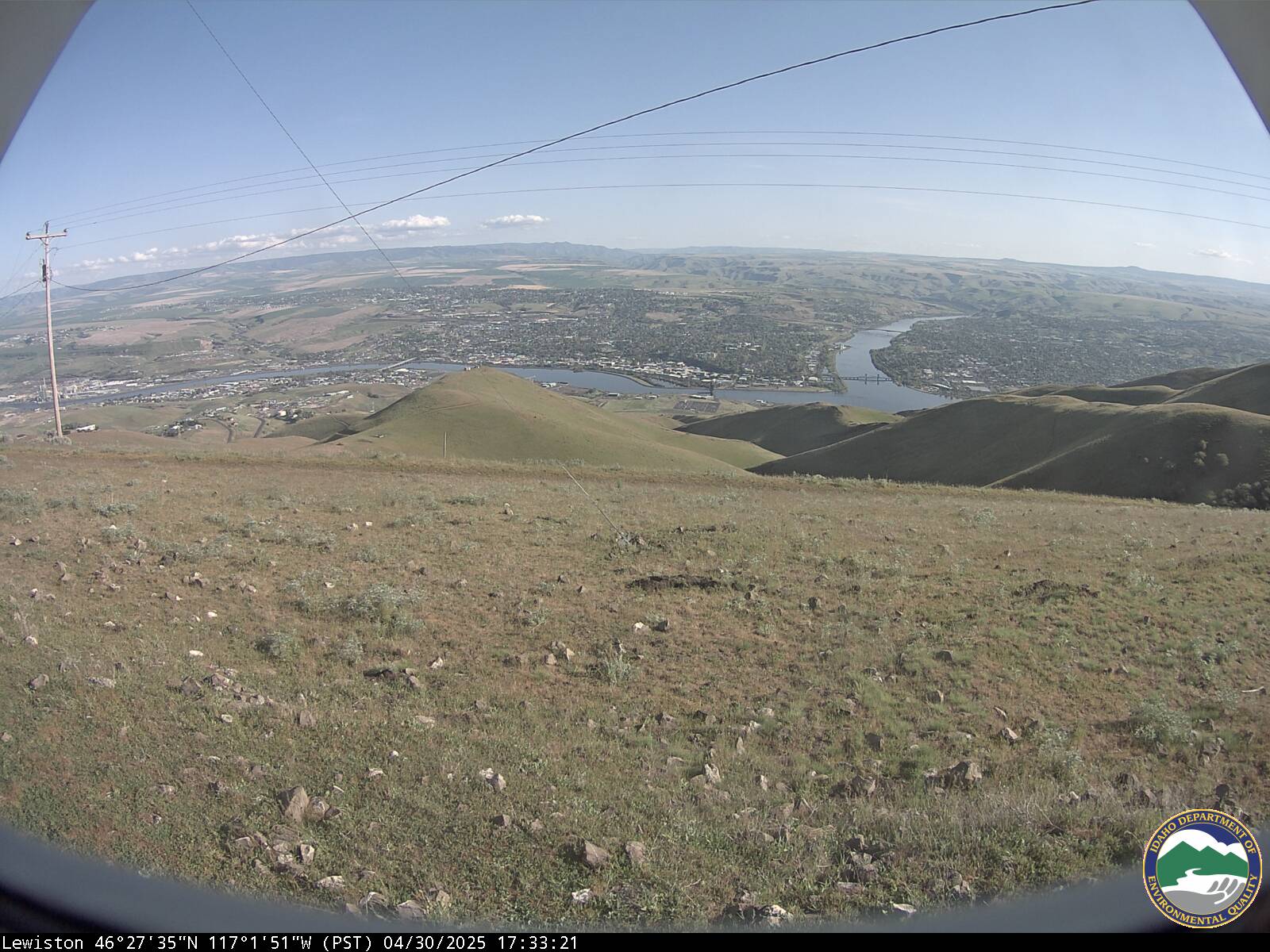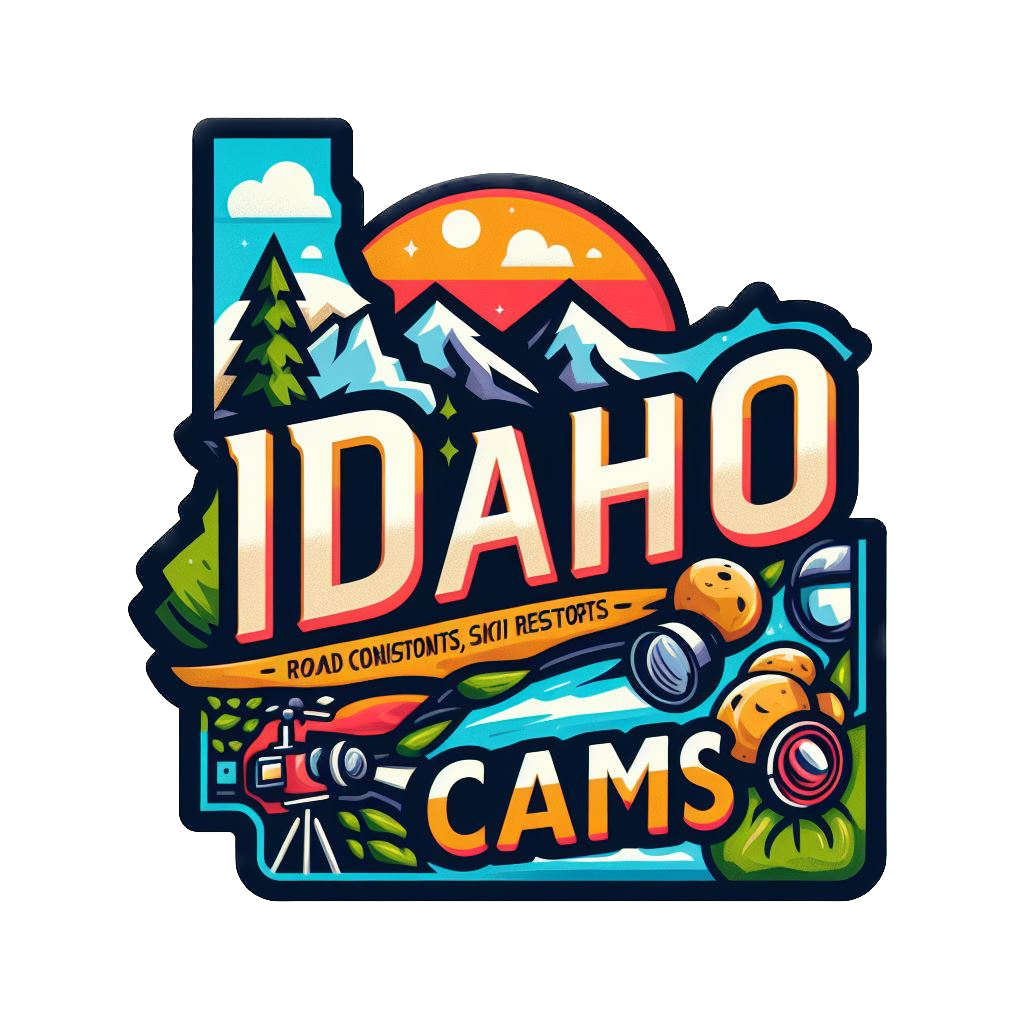Lewiston Hill, ID Weather Cams
Lewiston ID Visibility Cam (Nez Pearce County facing south overlooking Lewiston, ID and the Snake River drainage).

Lewiston Hill Cams
The Winding Road: A History of Lewiston Hill, Idaho
Lewiston Hill, ID Weather Cams. Lewiston Hill, a steep and winding stretch of road connecting the Palouse Prairie to the Lewiston-Clarkston Valley in Idaho, has played a significant role in the region’s development and transportation history. From Native American trails to modern highways, this challenging terrain has shaped the lives of those who traversed it for centuries.
Long before European settlers arrived, the Nez Perce people inhabited the area around what would become Lewiston Hill. They established well-worn trails connecting their villages in the Clearwater River valley to hunting grounds on the Camas Prairie above. These paths followed natural contours and animal trails, providing the most accessible routes up and down the steep hillside.
The Lewis and Clark expedition, led by Meriwether Lewis and William Clark, passed through the region in 1805 and again in 1806. Their journals describe the difficult terrain they encountered, including the steep descent into the Clearwater River valley. This early documentation highlighted the challenges that future settlers would face in navigating the area.
As white settlers began to arrive in the mid-19th century, the need for improved transportation routes became apparent. The discovery of gold in the Clearwater River and Salmon River regions in 1860 brought a rush of miners and prospectors to the area. Lewiston, established at the confluence of the Clearwater and Snake Rivers, quickly became an important supply point for the mining camps.
The increasing traffic between Lewiston and the Camas Prairie necessitated the development of a more formal road up Lewiston Hill. In 1862, the Washington Territorial Legislature authorized the construction of a wagon road from Lewiston to Walla Walla, Washington. This road included a section ascending Lewiston Hill, following roughly the same route as the earlier Native American trails.
The initial wagon road was steep, narrow, and treacherous. Travelers faced a grueling journey, with horses and oxen straining to pull heavily laden wagons up the hill. Descending was equally perilous, requiring careful control to prevent runaway accidents. Despite these challenges, the road became a vital link for commerce and communication in the region.
As settlement in the area increased, so did demands for improvements to the Lewiston Hill road. In the late 19th and early 20th centuries, various upgrades were made to widen the road and reduce its grade in some sections. However, the fundamental challenges of the hill remained.
The advent of automobiles in the early 20th century brought new pressures to improve the road. The steep grades and sharp turns that had been manageable for horse-drawn wagons proved daunting for early cars. In 1917, the Idaho State Highway Commission began work on a new, improved road up Lewiston Hill. This project, completed in 1920, featured a series of switchbacks that allowed for a more gradual ascent and descent.
The 1920 highway became famous (or infamous) for its 64 turns and steep grade. While it was a significant improvement over the earlier wagon road, it still presented challenges for drivers. The road gained a reputation as one of the most difficult and dangerous stretches of highway in Idaho. Accidents were common, particularly during winter months when ice and snow made the turns treacherous.
Despite its difficulties, the Lewiston Hill road became an important part of the region’s identity. Local residents developed a sense of pride in their ability to navigate the challenging route. Tourists often came to experience the thrill of the winding road and enjoy the spectacular views of the Lewiston-Clarkston Valley below.
As automobile traffic continued to increase throughout the 20th century, pressure mounted for further improvements to the Lewiston Hill road. In the 1970s, plans were developed for a major new highway project that would fundamentally change the route up the hill.
Construction on the new Lewiston Hill highway began in 1975 and was completed in 1977. This modern highway featured a straighter alignment with gentler grades, cutting through the hill rather than winding around it. The project was a major engineering feat, requiring extensive excavation and the construction of large retaining walls.
The new highway dramatically reduced travel times and improved safety for those traveling between Lewiston and the Palouse Prairie. However, its construction also marked the end of an era. The old winding road, which had challenged and thrilled generations of travelers, was largely abandoned.
Today, portions of the old Lewiston Hill road still exist, serving local traffic and offering a glimpse into the area’s transportation history. The Lewiston Hill Rest Area, located near the top of the grade, provides travelers with an opportunity to learn about the hill’s history and enjoy panoramic views of the valley below.
The story of Lewiston Hill reflects broader themes in the history of the American West. It illustrates the ongoing struggle to overcome geographical barriers, the impact of technological change on transportation, and the ways in which roads and highways shape patterns of settlement and economic development.
From Native American trails to modern highways, Lewiston Hill has continually adapted to meet the changing needs of those who travel its slopes. While the challenges posed by the hill have been largely tamed by modern engineering, the legacy of this formidable geographical feature lives on in local memory and lore.
As we look to the future, Lewiston Hill stands as a reminder of the ingenuity and perseverance required to connect communities and overcome natural obstacles. It continues to play a vital role in the region’s transportation network, linking the fertile Palouse Prairie with the port city of Lewiston and facilitating the movement of people and goods that drives the local economy.
The history of Lewiston Hill is, in many ways, a microcosm of the larger story of transportation in the American West – a tale of continuous adaptation, improvement, and the never-ending quest to make journeys faster, safer, and more efficient.
For more information, visit the official Lewiston Hill website here.
